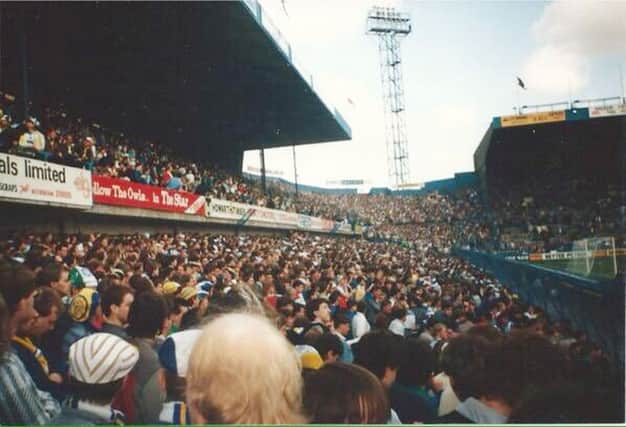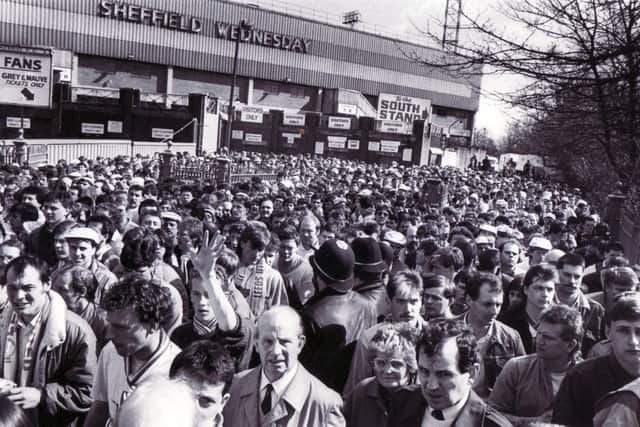The dreadful day when Leeds United fans escaped their own Hillsborough disaster


One of many damning revelations at the Hillsborough inquests was the story of how Peter Wright, the chief constable of South Yorkshire Police, unilaterally replaced his matchday commander, chief superintendent Brian Mole, just 19 days before the stadium disaster in 1989.
Mole’s duties passed overnight to David Duckenfield, the officer whose failings were adjudged by a jury at the inquests in Warrington to have directly contributed to the death of 96 Liverpool fans in Sheffield 27 years ago. The jury, which on Tuesday decided that those fans had been unlawfully killed, heard how Duckenfield’s inexperience and lack of knowledge of Hillsborough – culminating in a fateful decision to open a gate outside the Leppings Lane end – was a fundamental cause of the tragedy.
Advertisement
Hide AdAdvertisement
Hide AdTwo years earlier, Mole had been the matchday commander in charge of Leeds United’s FA Cup semi-final against Coventry City at the same ground. Supporters who attended that game, during which United’s crowd were housed in the same pens where almost 100 Liverpool fans died, tell tales of severe crushing and inadequate crowd management and find themselves using the same word: lucky. It might be that some of Mole’s involvement, not least his decision to delay kick-off as congestion built up outside the stadium, that averted the events of 1989.


The 1987 semi-final, played on Sunday, April 12, was the first to be staged at Hillsborough in fully six years. The Football Association had opted for other venues after an incident in 1981 where 38 Tottenham Hotspur fans were injured on the Leppings Lane terrace during a last-four tie against Wolverhampton Wanderers. Supporters complained of chaos outside the ground as they tried to get through a limited number of turnstiles in time for the start of the match. During the game, some suffered broken arms and another a broken leg.
South Yorkshire Police claimed the six-year gap between semi-finals at Hillsborough was down to two reasons: the fact that clubs involved at that stage of the FA Cup were not located close to Sheffield and complaints from local residents about those matches. The Hillsborough Independent Panel, however, concluded in 2012 that “clearly the 1981 incident and the disputes that followed had a bearing on this decision.”
In 1981, the lower tier of Leppings Lane was an open terrace. By the time of Leeds’ visit in 1987, and as a result of changes supposedly intended to improve the handling of crowds, fences had been installed, separating the terrace into separate pens. The ground opened at 9.30am for a 12.15pm kick-off but, as happened in 1981, the start was delayed by Mole for 15 minutes with thousands of fans still to clear the turnstiles.
Advertisement
Hide AdAdvertisement
Hide AdSteve Lawrence, a Leeds fan and civil servant who was in his late teens, said: “It wasn’t overly busy at first but as the next hour passed the pen became increasingly full – to the point where I literally couldn’t move. I remember the hot sun shining on me and being unable to lift my arm to shield the glare form my eyes.”


Fans who made the journey to Sheffield remember ticket inspections at checkpoints as they left the motorway and entered the city but few, if any, at the ground itself. In a warning of events to come in 1989, the mass of supporters coming through the turnstiles instinctively headed for the tunnel leading to the central pens in the lower tier of the Leppings Lane end. There was little or nothing in the way of signs or staff directing them into the outer pens.
According to the panel, South Yorkshire Police – while accepting a degree of operational failing – held the view that the delayed kick-off was caused by fans arriving late. A document submitted to the Lord Justice Taylor’s inquiry in 1989, written in 1987, said that it was becoming “increasingly apparent that large numbers of spectators are arriving extremely late at the ground, this may be related to the restricted access to alcohol in grounds and the prohibition on taking alcohol into grounds.”
Mole agreed to delay kick-off but the document stated that “this pressure should not be acceded to in future, the police should not be dictated to by supporters.”
Advertisement
Hide AdAdvertisement
Hide AdAccording to accounts of the day, fans who tried to scale the fencing were shouted down by police. John Murtagh, who was 17 at the time, told how a supporter next to him fainted and was lifted to safety by officers at pitchside.
“They did him a big favour,” he said.
South Yorkshire Police’s debrief at the end of the match, which Leeds lost 3-2 at the end of extra-time, made no mention of overcrowding in the Leppings Lane end.
In its overview of the disaster, the Hillsborough Independent Panel described the years between 1981 and 1989 as a period of ‘unheeded warnings, the seeds of disaster’.